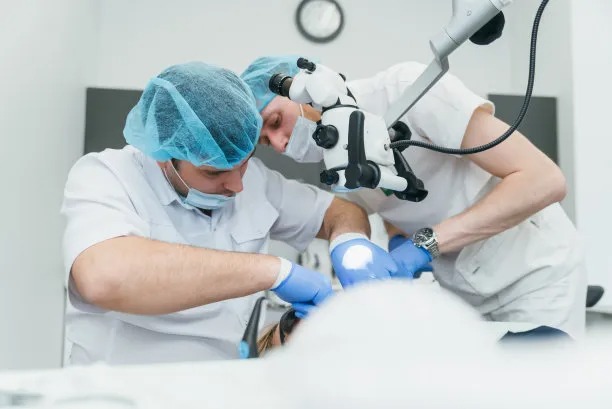The Comprehensive Guide to Extracting a Tooth Safely and Effectively for Optimal Oral Health
Summary: Extracting a tooth can be a daunting prospect, but with the right approach, it can be conducted safely and effectively. This comprehensive guide focuses on critical aspects of tooth extraction, including the importance of professional assessment, pre-extraction preparation, the extraction process itself, and post-extraction care. Through proper understanding and meticulous attention, individuals can ensure optimal oral health while minimizing discomfort and risks associated with this common dental procedure.
1. Importance of Professional Assessment

The first step before any dental procedure, including tooth extraction, is to undergo a thorough professional assessment. A qualified dentist will evaluate the tooth that requires extraction, taking into account various factors such as the tooths condition, surrounding gum health, and the patients medical history. This initial assessment may require X-rays to determine the tooths structure and its relationship with neighboring teeth and roots.
During this assessment, the dentist will discuss the reasons for the extraction. Whether due to decay, overcrowding, or periodontal disease, understanding the underlying issues helps in deciding the best course of action. The dentist may also consider alternative treatments that can preserve the tooth, emphasizing that extraction should generally be the last resort.
Moreover, a comprehensive medical history is crucial. Patients should communicate any allergies, medications, or pre-existing conditions that might complicate the procedure. This information empowers the dentist to tailor the extraction process safely to minimize risks associated with anesthesia and healing.
2. Pre-Extraction Preparation Steps
Once the dentist has determined extraction is necessary, pre-extraction preparation becomes essential. Patients should follow specific guidelines to ensure they are ready for the procedure. For instance, avoiding certain medications, such as blood thinners, might be necessary to reduce bleeding risks during and after extraction.
Patients are often advised to eat a light meal before their appointment, unless sedation will be used. This ensures that they have some energy without risking nausea. Hydration is equally important, as it aids in recovery. Discussing anesthesia options with the dentist provides clarity on what to expect during the procedure.
Additionally, emotional preparation plays a significant role in the extraction process. Patients should express any fears or anxieties to the dentist, who can provide reassurance and strategies for managing stress. Having a supportive friend or family member accompany them can help alleviate some of this anxiety.
3. Understanding the Extraction Process
The extraction process itself is generally straightforward but can vary depending on whether the tooth is a simple extraction or a surgical one. In a simple extraction, the dentist numbs the area surrounding the tooth with a local anesthetic. The dentist then gently loosens the tooth before removing it with forceps.
If the tooth is impacted or has not fully erupted, a surgical extraction may be necessary. This involves making an incision in the gum to access the tooth. While this procedure often sounds more intimidating, it is standardized and performed under sterile conditions to minimize infection risks.
Throughout the extraction, the dentist will monitor the patient’s comfort and vitals. Patients may hear noises or feel pressure but should not experience pain during the procedure. Understanding this process helps to ease anxiety and prepares patients for what to expect during their visit.
4. Effective Post-Extraction Care
Post-extraction care is vital for a smooth recovery and minimizing complications. Immediately after extraction, patients should rest and avoid strenuous activities for at least 24 hours. Ice packs applied to the outside of the face can help reduce swelling, while over-the-counter pain relief can manage discomfort.
It is essential to follow dietary recommendations post-extraction, starting with soft foods and gradually introducing more diverse options as healing progresses. Patients should steer clear of hot, spicy, or crunchy foods that could irritate the extraction site. Moreover, keeping the area clean by gently rinsing with warm salt water can contribute to faster healing.
Monitoring for any signs of infection, excessive bleeding, or unusual pain is crucial. Patients should not hesitate to contact their dentist if they experience concerning symptoms. A follow-up appointment to evaluate the healing process is often beneficial, ensuring that recovery is progressing as expected.
Summary:
The importance of a professional assessment prior to tooth extraction cannot be overstated, as it lays the foundation for a safe and effective procedure. Careful pre-extraction preparation, a clear understanding of the extraction process, and diligent post-extraction care are all essential components for optimal oral health. With this comprehensive guide, individuals can approach tooth extraction with confidence, knowing they are well-informed and prepared for the journey ahead.
This article is compiled by Vickong Dental and the content is for reference only.


